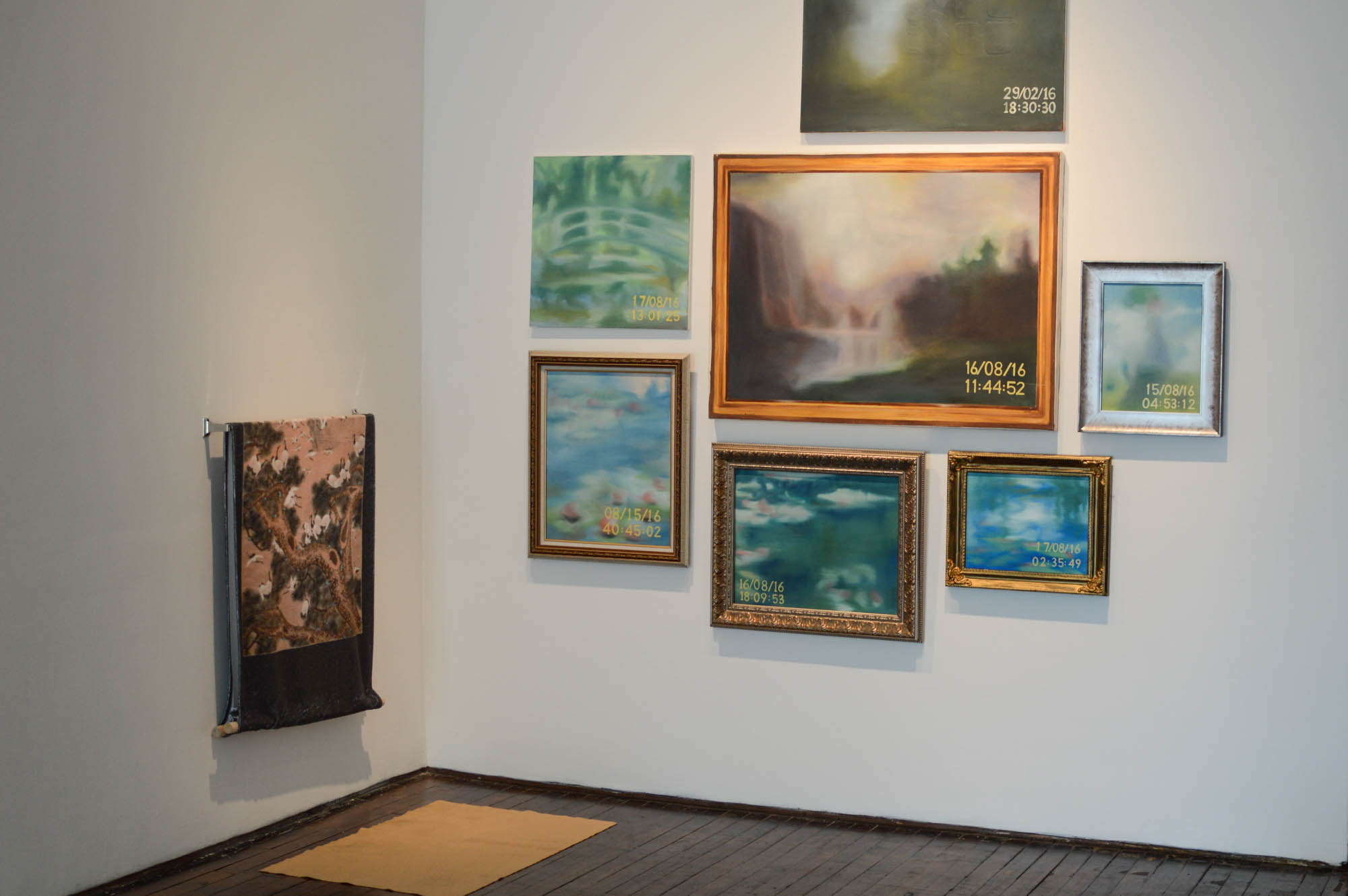Navigating the complex history of painting and landscape in the contemporary world
Painting is a medium with a complex yet polarizing history; how does one contemporize it? Le Salon, an exhibition featuring works by Gabriela Avila-Yiptong and Florence Yee, focuses on the medium of painting in history and within the contemporary world.
Many of the works in Le Salon feature landscapes—a subject matter very prominent throughout the history of painting, specifically in Canada. This was popularized through the works of the Group of Seven, a group of artists who were very successful across the nation for their paintings of the untouched Canadian landscape and wilderness.
Thought to be distinctive of Canadian art, the genre of landscape painting brought up many contemporary concerns and critiques. Most prominently, there are serious issues of representation, national identity and exclusion in defining a nation’s artistic identity based on the paintings of the Group of Seven, which was exclusively made up of white male artists. Other issues arise in the depiction of bare landscapes, with no human or industrial presence. This often ignores the presence of Indigenous peoples and communities on the land.
Yee, a recent Concordia fine arts graduate, is now attending Ontario College of Art and Design (OCAD) for her master’s in interdisciplinary art, media and design. Her work, which has been displayed around Montreal and at Concordia, focuses on themes of diaspora within her identity, issues of representation, the colonialist and patriarchal history of the art world and art canon.
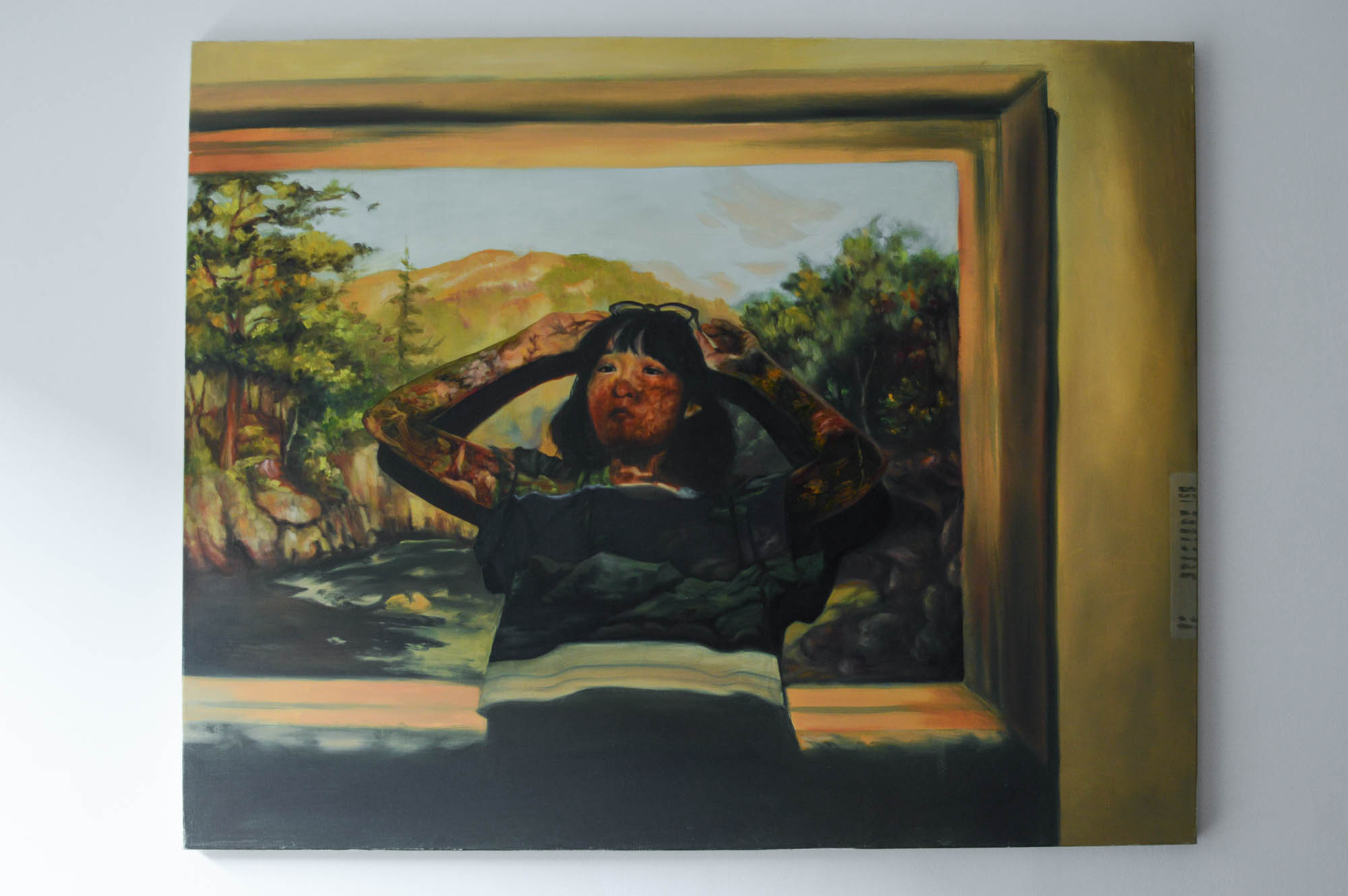
Photo by Mackenzie Lad.
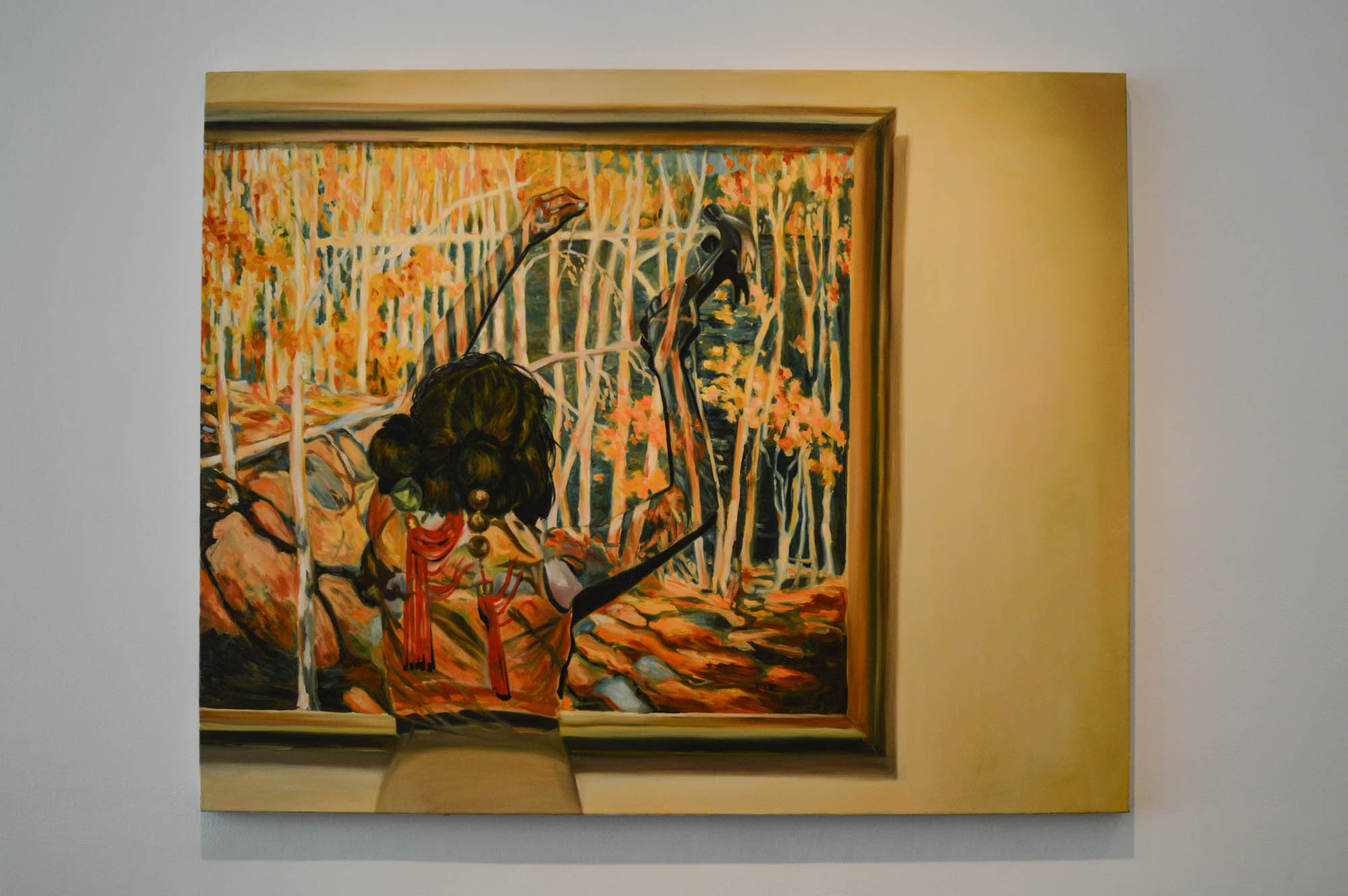
Yee’s pieces in Le Salon include Finding Myself at the MMFA III and IV. These self portraits were completed with oil paint and depict Yee standing in front of landscape paintings, with a projection of the painting covering her figure. Quite literally, Yee paints herself into these historically celebrated works.
Another work by Yee, Oh Canada, consists of embroidered yarn on canvas and recreates a Group of Seven landscape through the patterns of threading. Displayed in a glass case, the viewer can see the back side of the piece and further discover the detailing of a red flag, with the design of the U.K.’s flag in the upper left corner. This ensign on the back of the landscape can be considered as a way to remind viewers of the colonial presence across Canada’s lands, along with the patriarchal nature of the history of landscape painting.
Avila-Yiptong‘s works in Le Salon focus primarily on landscape. Florida Motel and I Could Die Here display idyllic landscapes in soft shades, featuring details of the sea and rainbows. The images are realistic yet dreamlike, as if they are a fantasy.
Through these works, contrasting with Yee’s focus on identity and ethnicity, Avila-Yiptong aims to remove the narrative and influence of culture and race, according to the artist statement on her website. Instead, she focuses on personal and emotional relationships with nature, through featuring places she has visited, and mixing styles of realism and abstraction.
This in itself also addresses the patriarchal nature of painting, by representing resistance against normative ways of viewing art and artists; white male artists do not have to fight for representation or opportunity within the medium, while women and artists of colour often do, historically and in today’s art world. By removing the focus on identity and race, and looking at the emotional relationship to landscape, Avila-Yiptong reclaims painting from these normative structures.
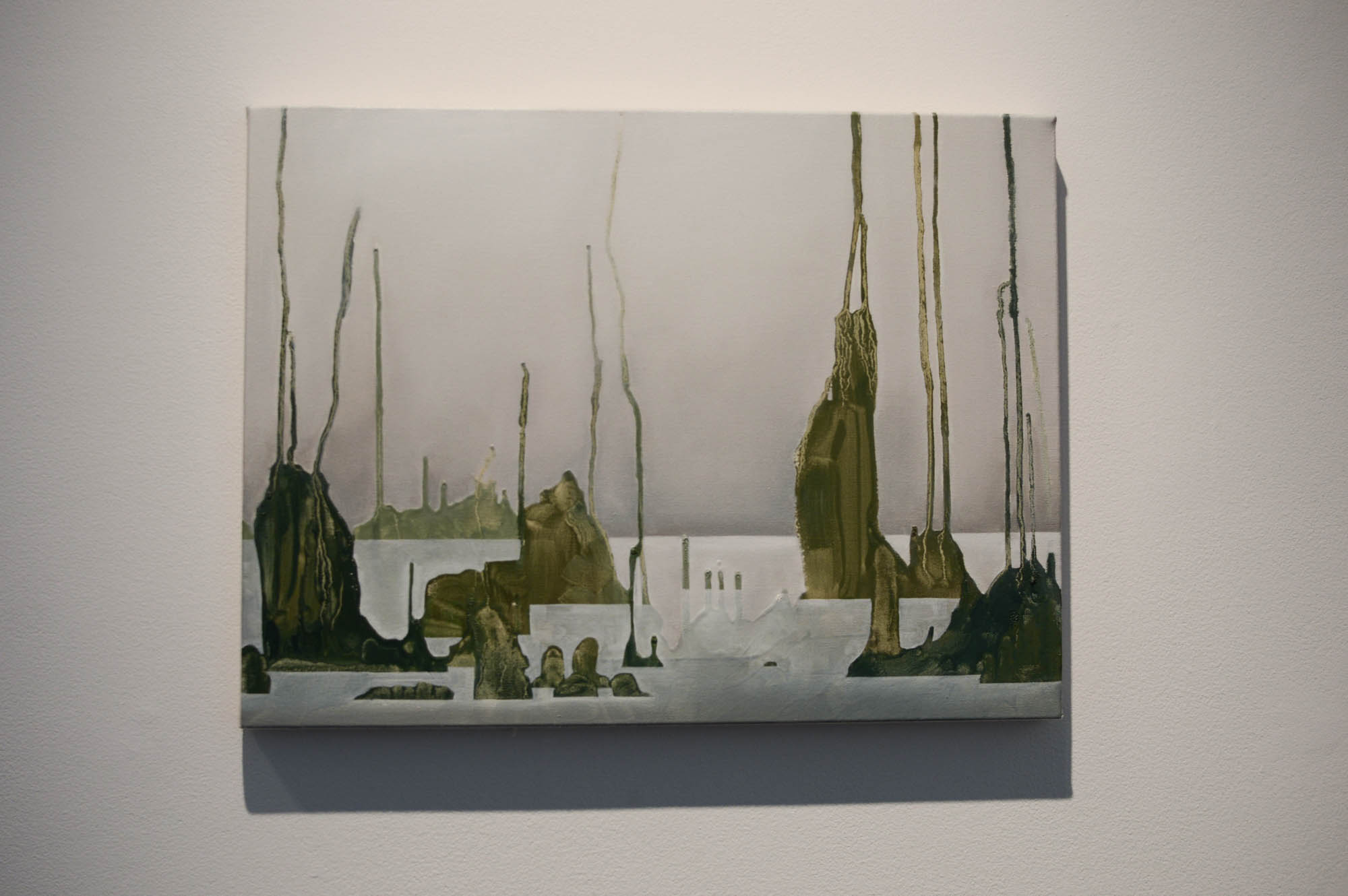
Photo by Mackenzie Lad.
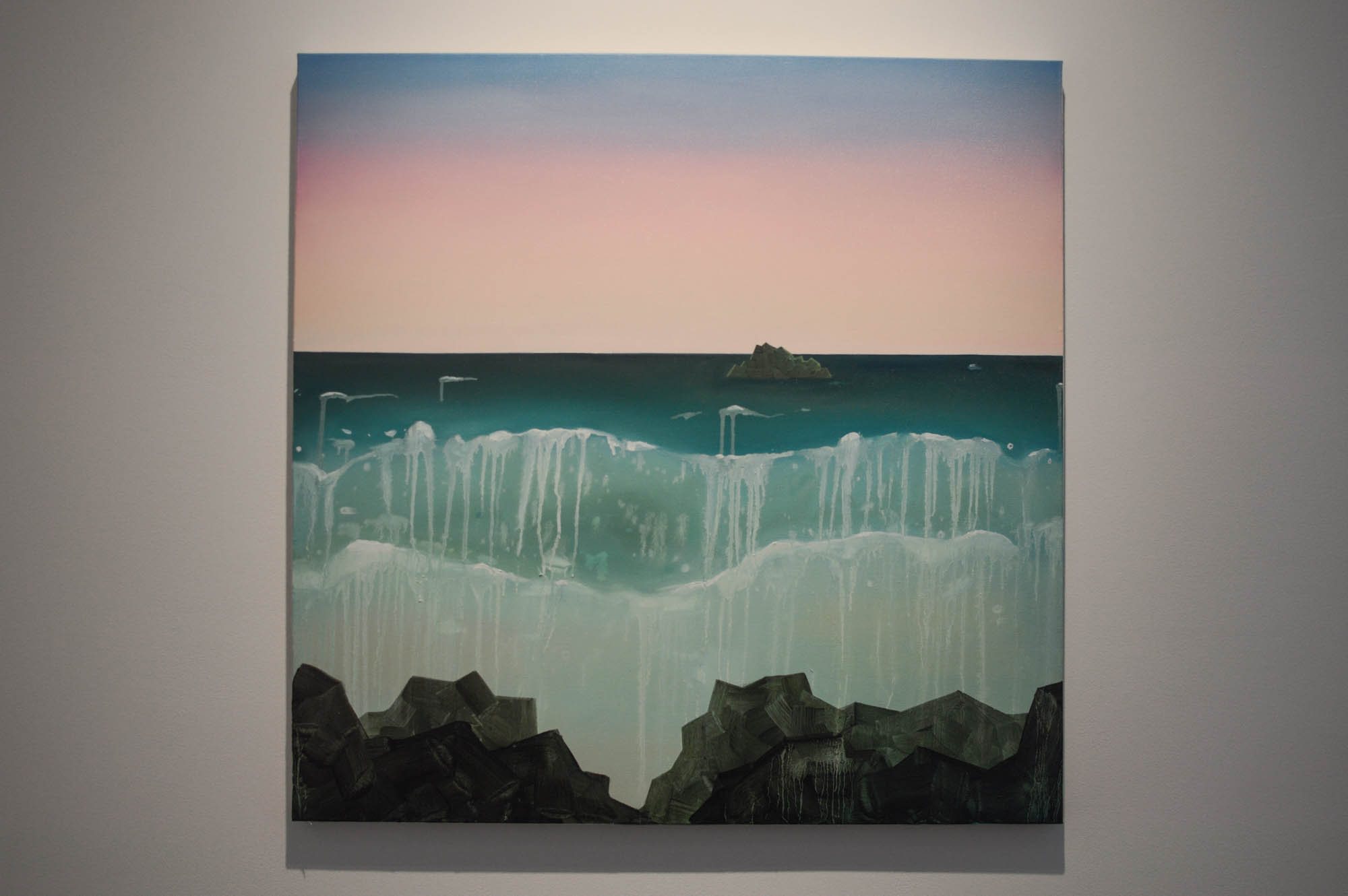
Photo by Mackenzie Lad.
Early in their respective practices, both artists discovered an interest in painting and the subject of landscape, but experienced racialized discussions and reactions to their work, as discussed in “Keeping Painting Contemporary: Inserting New Perspectives in an “Old” Medium,” a gallery text by Ariane Fairlie. The significance of painting and the landscape depictions within Canada are very much promoted through university art classes, which adds to their relationship with painting. These aspects of personal experience and representation through academia influence the artists’s respective work. A conversation emerges from the way the artists react, reclaim and find influence from these experiences and historical representations.
While both Yee and Avila-Yiptong look at different themes within their respective works, both question and explore the presence of painting within a contemporary context. Both artists are concerned with how the history of the medium and the subject of landscape can be contested. They are spaces that require much consideration, critique and change.
Le Salon is showing at Articule until Oct. 14. The gallery is open Wednesday to Friday from 12 p.m. to 6 p.m. and from 12 p.m. to 5 p.m. on Saturday and Sunday.
